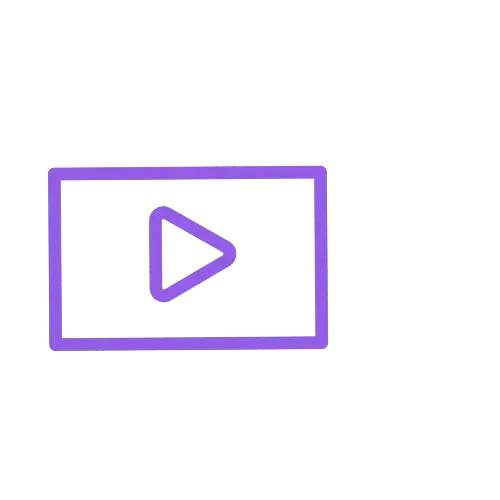The ultimate guide to transferable skills for jobseekers
Not sure what transferable skills are or how you can take advantage of them to land your next role? Keep reading as we break it all down.
-
Rebecca DiCioccio

Contents
What are transferable skills?
Transferable skills are expertise and strengths that can be applied in more than one role or industry. Having abilities that are not specific to just one area comes in handy if you’re considering a job or industry change. And the good news is, you probably already possess lots of them.
So what are transferable skills examples? As with all workplace strengths, they can be divided into soft and hard abilities.
Soft skills: Non-technical abilities and personal attributes that impact how a person interacts with their team and performs their work.
Hard skills: Specific, teachable abilities that are often acquired through formal education, training or on-the-job experience. Generally they are technical abilities that can be easily measured or demonstrated.
With the introduction of automation, AI and remote work, the job market is rapidly changing. This means that the types of roles available are also evolving and jobs that used to exist now don’t or jobs that didn’t exist are now in high demand. Due to this, jobseekers need to be more versatile and adaptable to keep up with ever-changing demand and employers can no longer rely solely on conventional qualifications or narrowly defined experience. Instead, they prioritise candidates who can learn quickly, collaborate across functions and pivot when business needs shift.
Why are transferable skills important to employers?
Rather than purely focusing on job-specific experience, many hiring managers are placing emphasis on attributes that apply across industry and role. Strengths such as this are the building blocks to effective work and from an employer’s point of view, hiring someone with proven transferable skills means gaining an employee who can:
- Adapt quickly to new environments and challenges.
- Collaborate across diverse teams.
- Contribute value from day one, even if they’re transitioning from another field.
Examples of transferable skills
Some great examples of transferable skills include:
|
Soft skills |
Hard skills |
|---|---|
|
Problem solving |
Data analysis |
|
Communication |
Software proficiency |
|
Teamwork |
Project management |
|
Time management |
Budgeting and financial planning |
|
Adaptability |
How to identify your own transferable skills
Not sure what transferable skills you bring to the table? You’re not alone. As a jobseeker, it’s easy to underestimate how many valuable attributes you’ve picked up through your career, studies and side projects.
But the good news is that with a little self-reflection, you can uncover the experience that is transferable across industry and roles.
Use the R-E-A-D framework
A simple way to start is with the R-E-A-D method: reflect, assess, extract, document.
Reflect
To get started, first reflect on past experiences, paying particular attention to:
- Previous job roles
- Volunteer work or community involvement
- Hobbies or personal projects
- Education and training
- Freelance or gig work
Even if your expertise seems unrelated to the roles you’re targeting now, each of these can offer valuable insights into what you naturally excel at and enjoy.
Extract
Next, dig a bit deeper by asking yourself some questions. What tasks did you frequently handle in past roles? What did your managers or teammates often praise you for? Think about challenges you’ve faced, how did you overcome them and what strengths did you rely on?
Consider the tools, systems or methods you used regularly. Also think about moments when you stepped up to lead or support others. These reflections can help you identify recurring skills and patterns.
You can use these answers to list specific actions and match them to transferable skill categories, such as communication, organisation, leadership or technical literacy.
Assess
Once you’ve identified a variety of potential competencies, think about which ones are most relevant to the roles you’re interested in.
The best way of doing this is by reviewing job listings to see which attributes appear frequently and think about how your own knowledge and experiences align. Instead of being specific or niche, pay attention to broad or versatile abilities, such as project management or communication. These wider knowledge-sets are more likely to support a transition into a new industry or role.
Document
Finally, create a skills inventory to keep track of what you’ve uncovered. For each transferable skill, write a short description of what it means in your context, followed by one or two real-life examples of how you’ve demonstrated it. If possible, include outcomes or results you achieved. This will help you easily reference and showcase these skills in your CV, cover letters and interviews.
How to showcase transferable skills on your CV and in interviews
Understanding your transferable skills is one thing, but knowing how to reflect them on your CV and in interviews is what’s really going to make you stand out. Whether you’re writing a CV, tailoring a cover letter or preparing for an interview, your goal is to clearly demonstrate how your expertise aligns with the role and can add value from day one.
CV writing to highlight your expertise
The key point to remember when updating your CV is to weave your varied expertise throughout, rather than isolating them into one specific section. Here are some top tips for how to do it effectively:
- Use a tailored summary statement: Start with a short professional summary that highlights your top transferable skills and ties them to the job you’re applying for.
- Show, don’t just tell: Instead of listing “teamwork” or “adaptability,” demonstrate those skills through results. For example:
“Led a cross-functional team of 5 to deliver a marketing campaign that increased lead conversions by 30%.” - Include a Skills section with keywords: Use relevant job ad terms, especially soft skills for job application success. These can help your CV pass through applicant tracking systems (ATS) and catch a recruiter’s eye.
- Tailor for each role: Align the language and focus of your CV to the specific job. If the ad mentions “stakeholder management,” use that phrasing if applicable, instead of a general term like “communication.”
Tips for writing eye-catching cover letters
Your CV is your first chance to make an impression on a hiring manager, but the way you can really stand out is through a well written cover letter. A cover letter is even more important if you’re changing industry or role as it allows you to dive deeper into what you have done in the past and how it can be applied to the job you’re applying for. It’s the perfect opportunity for you to explain how your knowledge and experience align with the position and why they make you a good fit for the position.
Not sure where to start when it comes to revamping your cover letter? Here are our top tips.
- Tell a mini career story: Briefly outline your background, highlight key transferable skills and connect it directly to the role.
- Bridge the gap: If you’re shifting careers, clearly state how your experience in one context prepares you to succeed in another.
- Show enthusiasm and learning mindset: Soft attributes like motivation, resilience and a willingness to learn can be powerful differentiators, especially in career transitions. So make sure you put a spotlight on these with examples of when and how you have exhibited this behavior.
Interviewing with confidence
Interviews are always nerve-wracking, but going in prepared empowers you to put your best foot forward. This is your chance to back up everything you’ve mentioned in your application and bring your transferable skills to life.
Here’s exactly how you can do it:
- Use the STAR method: Structure your responses around the situation, task, action and result to show how you’ve used your expertise in practice.
- Anticipate behavioural questions: Common prompts like “Tell me about a time you worked under pressure” or “Give an example of teamwork” are perfect chances to highlight soft competencies that employers value.
- Relate to the role: Don’t just share a story, link it directly to the job. For example:
“This experience taught me to manage conflicting priorities effectively, which I believe is crucial in this fast-paced customer success role.” - Reinforce keywords: Use language from the job description to reinforce your fit. For example, if the ad mentions “initiative” or “collaboration,” be sure those words appear in your answers.
Tips for career changers and returning jobseekers
If you feel like you’re the only one changing career, we promise, you’re not. In fact 1 in 10 UK workers have made a career change in the last 10 years. And it’s important to remember that you’re not starting from scratch.
In fact, your most powerful asset in this transition is your bank of varied expertise. It’s time to start reframing changing industries or returning to work as a positive, rather than a negative, as broad experience shows employers that you can adapt, grow and thrive, even in a new industry or role.
Reframe your experience
It’s common to feel unsure about your value when your experience doesn’t match a job ad word-for-word. But here’s the truth: you’ve likely built transferable skills through previous jobs, parenting, caregiving, travel, volunteering, study or even side projects.
- Managed a household? That’s project management, budgeting and logistics.
- Organised a school fundraiser? Think event planning, stakeholder communication and goal setting.
- Studied or upskilled recently? You’ve demonstrated initiative, digital literacy and self-discipline.
These are skills that are applicable in the workforce and meaningful to employers.
Addressing the gap with confidence
If you’re returning to work after a break, due to parenting, health, redundancy or any reason, employers today are increasingly open to non-linear career paths. Be honest, brief and confident when explaining your gap. Focus on:
- What you’ve learned
- How you’ve stayed engaged or upskilled
- What transferable skills you bring to the role
For career changers, connect the dots between your past and your future. Use your CV, cover letter and interviews to clearly explain why you’re pivoting, how your skills apply and what you bring that’s unique.
Practical next steps
Here are some tangible actions to help you move forward:
- Identify your top transferable skills using a framework like R-E-A-D.
- Tailor your CV for each role, emphasising relevant skills over job titles.
- Practice your pitch: Have a confident explanation for why you’re changing paths or returning.
- Seek out flexible roles or employers known for supporting career changers.
- Use Employment Hero Jobs to match your skills, not just your job history, to open roles.
Find your next opportunity with Employment Hero Jobs
Changing careers or rejoining the workforce can feel intimidating, but it’s important to remember that your transferable skills are something employers will take into consideration (and see value in). But finding the right jobs to apply for is easier said than done.
This is where Employment Hero jobs comes into play. Our goal is to help jobseekers find roles where they can truly add value. So unlike traditional job boards, Employment Hero Jobs helps you discover opportunities based on what you can do.
The platform is designed to recognise and match skills that are transferable, including both your soft and hard skills, to a wide range of open positions. Whether you’ve managed projects, solved customer problems or led teams, we’ll connect you with employers looking for exactly those strengths.
Don’t let job titles limit your potential. Let your skills lead the way.
Sign up for Employment Hero Jobs now and find your next opportunity, faster.



















